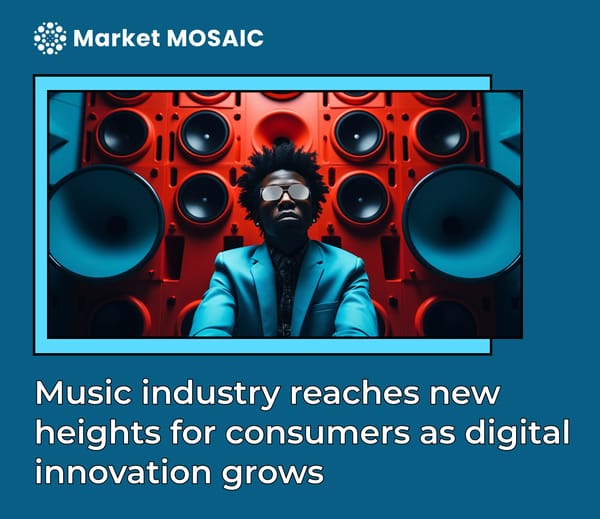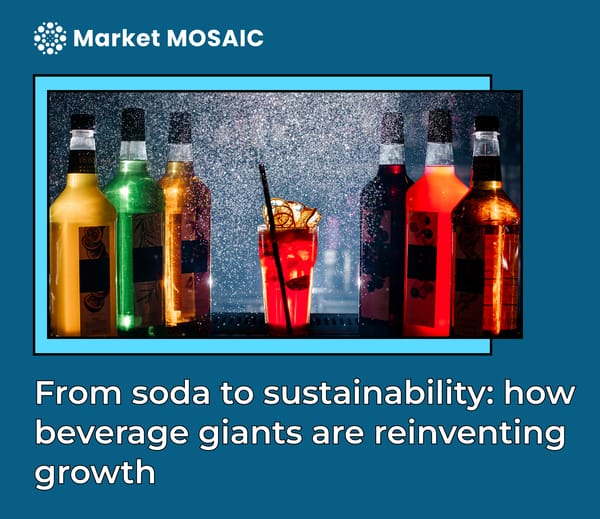Experience is King: The Key to Unlocking Consumer Loyalty

In the past, consumers primarily focused on a product's functional benefits and value for money when making purchasing decisions. However, there has been a significant shift towards experience-driven consumption in recent years, where consumers seek more personalized, immersive, and memorable experiences. This trend is particularly evident in the CPG industry, where brands incorporate experiences into their products to offer additional value to consumers.
This shift towards experience-driven consumption has been driven by various factors, including changes in societal values, increased access to technology, and the influence of social media. Consumers are still looking for more than just meeting their basic needs; they seek products that create emotional connections and offer a unique and engaging experience.
In the CPG industry, this trend has significant implications. Brands that can offer their customers personalized, immersive, and memorable experiences will be well-positioned to succeed in this new era of consumer behavior. By incorporating experiences into their products, CPG brands can differentiate themselves from their competitors and create stronger customer relationships.
For example, a beauty brand might offer personalized consultations or tutorials to help consumers find the right products for their skin type. A food brand might offer recipe ideas or cooking tips to help consumers create memorable and enjoyable meals. A cleaning brand might share pointers on making cleaning effortless and entertaining, such as offering a unique scent or texture to their product.
These experiences can create emotional connections with consumers and build brand loyalty. By offering additional value beyond the product's essential function, CPG brands can develop a sense of brand loyalty and repeat purchases.
Experience-driven consumption matters for CPG brands for several reasons.
Experience-driven consumption has become an important trend in the consumer market, and it is increasingly crucial for CPG brands to consider how they can offer unique and engaging experiences to their customers. By creating experiences beyond their products' basic functionality, CPG brands can make a lasting impression on their customers, build brand loyalty, and drive sales growth.
One reason why experience-driven consumption matters for CPG brands is that it allows them to differentiate themselves from their competitors. With so many products available in the market, consumers are looking for more than just basic functionality. They are seeking products that can create an emotional connection with them and offer a memorable experience. By meeting these expectations and offering additional value, CPG brands can stand out from the crowd and create a sense of brand loyalty.
Another reason why experience-driven consumption matters for CPG brands is that it helps them stay relevant in a rapidly changing retail landscape. Consumers are now more demanding in terms of what they expect from their purchases and are looking for products and services that can offer a unique and engaging experience. By adapting to this trend and offering memorable and relevant experiences, CPG brands can stay competitive and meet their target audience's evolving needs and desires.
Experience-driven consumption can also increase sales and revenue growth for CPG brands. By creating experiences that go beyond the basic functionality of their products, CPG brands can encourage consumers to spend more time engaging with their products, leading to increased sales and revenue growth. Additionally, experiences can create positive word-of-mouth advertising and social media buzz, further driving sales growth.
Here are a few more examples of CPG brands that have successfully incorporated experiences into their product packaging:
Hint Water

Hint Water is a beverage brand that has successfully incorporated experiences into its product packaging. Each bottle of Hint Water features a flavor suggestion that encourages customers to mix and match flavors to create their own unique blends. This approach adds value to the product and makes sense of experimentation and discovery around the brand.
Justin's Nut Butter

Justin's Nut Butter is a nut butter brand that has successfully incorporated experiences into its packaging. Each jar of Justin's Nut Butter features a recipe suggestion that encourages customers to use the product in new and creative ways. This approach adds value to the product and creates a sense of excitement and exploration around the brand.
Cholula Hot Sauce

Cholula Hot Sauce is a hot sauce brand that has successfully incorporated experiences into its packaging. Each bottle of Cholula features a recipe idea that encourages customers to try new ways to enjoy the product. This approach adds value to the product and creates a sense of excitement and experimentation around the brand.
Pipcorn

Pipcorn is a snack food brand that has successfully incorporated experiences into its product packaging. Each bag of Pipcorn features a recipe idea that encourages customers to try new ways to enjoy the product. This approach adds value to the product and creates a sense of excitement and exploration around the brand.
Implementing experience-driven strategies for CPG brands involves a few key steps:
Understand your target audience: Gather market intelligence and consumer data to understand their needs, desires, and pain points. Analyze consumer trends, gather customer feedback, and use other consumer data to understand your target audience better.
Identify opportunities for experiences: Once you understand your target audience, identify opportunities for experiences that can add value to your products. For example, consider incorporating recipes or meal ideas into your packaging, offering product demonstrations in-store, or creating personalized consultations for customers.
Create a cohesive brand experience: Create a coherent brand experience across all touchpoints, including packaging, in-store displays, social media, and customer service. Ensure your brand messaging, values, and personality are consistent across all channels.
Train your staff: If you implement experience-driven strategies in your offline stores, it's essential to train your staff to deliver these experiences consistently. Your team should be knowledgeable about your products, able to provide personalized recommendations, and trained in customer service best practices.
Measure and adjust: Finally, it's essential to measure the success of your experience-driven strategies and adjust your approach accordingly by tracking metrics such as sales growth, customer feedback, and social media engagement to understand how the experiences you are offering resonate with your target audience. Use this data to refine your approach and create more engaging customer experiences. Market intelligence shouldn't be something a company does once but rather an ongoing activity to track product performance and usage directly from consumers. By staying up to date with market trends and consumer needs, you can make the necessary iterations to ensure that your experiences continue to meet the evolving expectations of your target audience.
Measuring the success of experience-driven strategies for CPG brands involves tracking key metrics to understand how your experiences resonate with your target audience.
Here are some key metrics to consider when measuring the success of your experience-driven strategies:
Sales growth: One of the most important metrics to track is sales growth. Has the implementation of experience-driven strategies generated an increase in sales? Are customers purchasing more products or returning to your store more frequently? By tracking sales growth, you can understand the impact of your experiences on your bottom line.
Customer feedback: Another critical metric to track is customer feedback. Use market intelligence to track consumer insights and understand how your customers respond to your experiences; this involves regularly monitoring consumer behavior and gathering data on product usage and preferences.
Customer loyalty: Creating memorable experiences can help build customer loyalty and lead to repeat business by tracking metrics such as customer retention rate and lifetime value to understand how your experiences impact customer loyalty.
Market trends: Finally, staying updated with market trends and consumer needs is crucial. Use market intelligence and consumer data to track product performance and usage directly from consumers. By staying up to date with market trends and consumer needs, you can make the necessary iterations to ensure that your experiences continue to meet the evolving expectations of your target audience.





